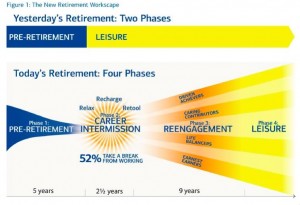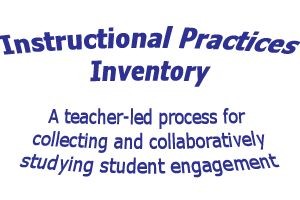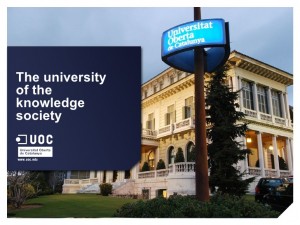I am just recovering this week from a busy, celebration filled week last that I want to share with my blog friends.
The week started by a quick trip to Barcelona, where besides being able to watch FBT Barcelona win the final Champion League match, I was honoured being made a Senior Fellow in the European Distance & E-Learning Network. I think I am the first person born outside of Europe to receive this honour, so it was a great way to start the week.
The EDEN conference was good (as usual) and it was fun to revisit Barcelona, after Sue and my two month stay there in 2013. No, the Sagrada Familia is not finished, but wonderful new towers are now in place – no photos as I decided to leave my iphone somewhere in the Barcelona airport 🙁
Then back home to do a keynote at our Centre for Distance Education annual conference. It was a small conference and was I able to mostly re-use themes from previous presentations. The talk was about the multifaceted topic of Interaction in Distance Education, which I realize has been the major theme of my whole academic career. The picture below shows Mohamed Ally and me with the wonderful painting of the town of Athabasca, that I received as a retirement gift. It was then on to the big event of the
 day, the Retirement Party I had organized for myself (with help from many friends)!!
day, the Retirement Party I had organized for myself (with help from many friends)!!
I had watched Jack Nicholson, About Schmidt as he sat watching the clock on his final day of work, and I wanted to go out with a bigger splash than that! So I invited all the faculty at Athabasca, many friends, my Edmonton relatives, some Unitarians and whomever else I thought might like to come. Now, planning a party with such an open invitation (somehow I forgot the RSVP part!) meant we really didn’t know how many people would come.
We rented the Riverdale House, which is a smallish meeting room above the rink shack at the community league a few houses from where I live. The idea was to spill out into the park and community gardens, around the House, when we filled up the building. Now, I ordered “no rain” since June in Alberta is the rainiest month – and we only got a few sprinkles. What I had forgotten to do, was order the outside heat and it was a bit of a chilly evening.
My friend Don brought a sound system, and we heard and laughed at many good stories. Then we did a “jam” with w hoever brought an instrument. I had my hammer dulcimer, but not having played for a week while in Spain, jet lag and the pressure of the event, meant I was not in top form! The BBQs made some great food and there was a fair bit left to donate to the Youth Emergency Shelter.
hoever brought an instrument. I had my hammer dulcimer, but not having played for a week while in Spain, jet lag and the pressure of the event, meant I was not in top form! The BBQs made some great food and there was a fair bit left to donate to the Youth Emergency Shelter.
I also dug out a box of what remains of my old toy business and a book case full of books that I had authored or done chapters in, to create a “From wooden toys to online learnin” display.

My main motivation in the party was to bring together the many Alberta friends from far different walks of life and provide them a chance to meet each other. they are all interesting folks- well at least interesting (or boered) enough to come to a party For me!!! – and to a degree I think it succeeded.
Of course, I was asked what next? As I said in a previous post, I’ve got a number of projects on the go, a couple of keynotes booked for this fall and I hope time for time for bike riding, blogging, skiing, music and developing new hobbies and ways to serve.
At risk of using this blog more than I usually do to ‘blow my own horn’ I want to end this post with two of the many very kind (and often too generous) emails and cards (thanks) that I received. My first Doctor student, Stuart Berry wrote on his blog:
I understand that you are officially retiring from Athabasca University and I am sorry I cannot be at your farewell party. I would, however, like to pass on my best wishes as well as some thoughts with regards to the impact you have had upon my life and career, and through a similar lens, what impact I know you have had on the lives on many students throughout your academic career.
I was your first doctoral student. We met for the first time at Athabasca in August of 2008 during the cohort weeklong residency. You had earlier written to me and proposed you and I might be a good fit for my proposed research interests. I was over-the-moon as I knew you by reputation and the thought of having the Canada Research Chair in Distance Education as my potential dissertation supervisor was, I thought, a dream come true. In retrospect, this was a dream come true, but for many reasons that at the time I did not nor could not appreciate or imagine.
In our six years together as mentor and student I was frustrated yet continuously encouraged by you to find the limits of my academic capacity. I was nurtured and supported in the opening of doors, the ramifications of which neither you nor I fully appreciated at the time, yet you did not blink. You continued to be excited with and for me in this journey. You were always present. You taught me about the whole idea of presence, not just through your daily academic work with students and your prolific publishing record but most of all by you being everything and more you talk about and tell us in your very public writings: You live as you speak and write. I never once felt anything other than your continual presence throughout my doctoral journey.
I saw impenetrable walls. You waited patiently for me to see these obstacles through different eyes knowing when I understood what was needed to be known, the walls would become new knowledge and understanding and would cease to be perceived barriers. I know at times I resisted your shaping and your gentle nudgings. Maybe that is just part of the journey but as I have had the time and space to revisit and re-examine my six year journey with you I feel what stands out most is your gentle, open, and unhurried approach to dealing with the challenges we all face everyday.
Your list of accomplishments is quite legendary. If I have learned anything from you it is this: we are all working together for a common purpose; our hearts and minds need to be ever open; the work we do in education is for everyone and not a select few; and, most of all, the journey is the gift. I thank you for allowing me to be part of that journey.
It has been an honour and a pleasure and I wish you a long, healthy, and happy next phase of your life, especially sharing it with your wonderful Susan.
Stu
Comments like Stu’s make me really appreciate the opportunity to be a teacher.
I’ll end with the email from Athabasca Medieval Studies professor Marc Cels. Marc didn’t realize this, but Susan and I are great admires if Hildegard of Bingen. In fact in 2003 we made a special stop in Bingen on a driving trip through Germany. He wrote and attached the picture of one of Hidegard’s visions below:
I regret that I won’t be able to attend your shing-ding this evening as I’m feeling under the weather. I really wanted to come to give you a proper send-off and to express my gratitude for all that you’ve done for AU, your sage advice, your example the you have given us, and your particular assistance to me and our colleagues at the Centre for Humanities. I wish you well with your next projects and hope that retirement will allow you to focus on what you enjoy and to put aside what distracts!
You’ve acted as a sort of DE Guardian Angel or Patron Saint at AU, so I offer you an electronic icon of the woman who I think should be the official patron saint of D.E. (I just haven’t gotten around to writing the Vatican): Hildegard of Bingen (1098-1179). I assign students of my medieval history course a sample of her writings and book illustrations. This German abbess is famous for receiving divine revelations (the ultimate form of DE!) and sharing them broadly, having founded several monasteries or convents with busy scriptoria. Though a woman and a nun barred from the cathedral schools and nascent universities, she provided herself with a good education, excelling as a composer of music, writer of plays, poet, mystic, philosopher/scientist, preacher and a critical commentator on the affairs of her day (by a copious correspondence). Her advice was sought out by popes and emperors. The image is from her book of visions, the Liber Scivias, and I believe the manuscript was illustrated by the “Visual Designers” under her direction, so this is close to a self-portrait. It shows the mystic receiving a divine vision and recording it on her tablet with the help of her discrete clerical secretary.
So, you see, the perfect model for a DE scholar! Thanks again for being our flesh-and-blood model, Terry.





 hoever brought an instrument. I had my hammer dulcimer, but not having played for a week while in Spain, jet lag and the pressure of the event, meant I was not in top form! The BBQs made some great food and there was a fair bit left to donate to the Youth Emergency Shelter.
hoever brought an instrument. I had my hammer dulcimer, but not having played for a week while in Spain, jet lag and the pressure of the event, meant I was not in top form! The BBQs made some great food and there was a fair bit left to donate to the Youth Emergency Shelter.




